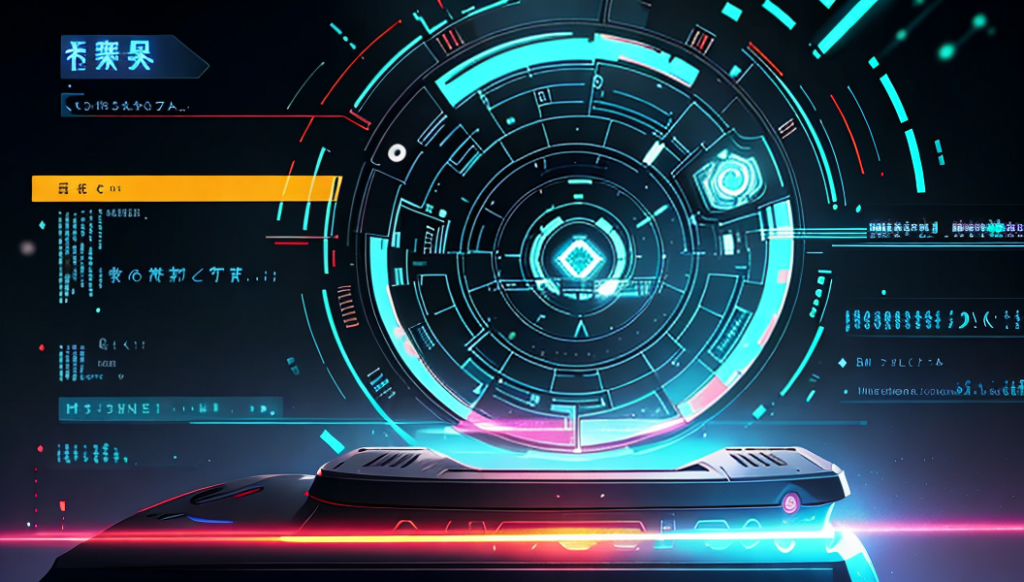Think of the most advanced AI-powered chatbots and content generators – the ones that produce accurate, relevant, and timely responses. Chances are, they’re built on top of a powerful Retrieval-Augmented Generation (RAG) system. But here’s the catch: traditional RAG systems require a lot of code, expertise, and resources to set up and maintain. That’s a significant barrier for many businesses, especially smaller ones or those without extensive AI experience.
That’s why no-code RAG systems are a game-changer (okay, I don’t like to use that phrase, but you get the idea). They democratize access to AI technology, enabling businesses to build powerful RAG chatbots and content generators without needing to write a single line of code. The benefits are numerous: reduced costs, faster development, and increased efficiency.
So, what exactly is a no-code RAG system? Simply put, it’s a platform that allows you to integrate external knowledge sources with your AI models without requiring extensive coding knowledge. This integration enables your models to retrieve relevant information from these sources and generate more accurate, informed responses.
Let’s break it down further. Traditional Large Language Models (LLMs) have limitations, including static knowledge bases, inaccuracies, and lack of domain-specificity. RAG systems address these limitations by providing LLMs with real-time access to verified external information, enabling them to generate more accurate, relevant, and timely responses.
Take, for instance, a customer support chatbot. A traditional LLM might struggle to respond accurately to customer queries, especially if they’re outside the scope of its training data. But a RAG-powered chatbot can retrieve relevant information from external sources, such as customer records or product specifications, to generate more informed responses. The result? Happier customers and reduced support queries.
Now, you might be wondering how no-code RAG systems achieve this level of sophistication. The answer lies in their ability to connect with various Large Language Models and knowledge sources; programs such as Dante AI, Relevance AI, or Voiceflow have easy-to-use knowledgebase builders that connect to a number of different LLMs. These connections enable the seamless integration of external knowledge, allowing your AI models to generate more accurate and relevant responses.
Another significant advantage of no-code RAG systems is their cost-effectiveness. They require less computational power and data compared to extensive fine-tuning or training LLM processes. This reduced complexity also means that businesses can focus on what matters most – developing their products and services, rather than navigating the intricacies of AI development.
So, what kind of applications can you expect from no-code RAG systems? The possibilities are vast, but some examples include:
- Question answering systems that provide accurate, relevant responses
- Generation of insights on businesses, enabling data-driven decision-making
- Revolutionizing chatbots, search engines, and data analysis tools

Overcoming the Limitations of Traditional Large Language Models with RAG
Traditional Large Language Models (LLMs) have been the cornerstone of AI-powered chatbots and content generators for years. However, they have significant limitations that can hinder their performance and accuracy. For instance, their knowledge bases are static, which means they can become outdated quickly. They’re also prone to inaccuracies and hallucinations when faced with queries outside their training data, leading to irrelevant or misleading responses.
Moreover, traditional LLMs lack domain-specificity, which can result in responses that are too general or vague. This lack of specificity can be frustrating for users who require targeted and relevant information. Furthermore, LLMs can struggle to handle complex, open-ended questions or multi-step conversations, leading to a disappointing user experience.
That’s where Retrieval-Augmented Generation (RAG) systems come in. By integrating external knowledge sources with LLMs, RAG systems can overcome these limitations and provide more accurate, relevant, and timely responses. RAG’s mechanism involves retrieving relevant documents from a pre-defined knowledge source, augmenting the generation process with retrieved information, and generating text that is linguistically fluent and grounded in the retrieved information.
One of the primary advantages of RAG systems is their ability to provide LLMs with real-time access to verified external information. This access enables LLMs to generate more informed responses, reducing the risk of inaccuracies and hallucinations. Additionally, RAG systems can handle complex, open-ended questions and multi-step conversations with ease, providing a more human-like conversation experience.
RAG systems also excel in domains that require specialized knowledge or expertise. For instance, a RAG-powered chatbot in the healthcare domain can retrieve relevant information from medical journals, patient records, or clinical trials to generate accurate and informed responses. This capability enables businesses to provide targeted and relevant information to their users, enhancing their overall experience.
Another significant benefit of RAG systems is their ability to reduce the risk of biases in AI-generated responses. By integrating external knowledge sources, RAG systems can provide a more diverse and balanced perspective, reducing the risk of perpetuating harmful stereotypes or biases. This is particularly important in applications where AI-generated responses can have a significant impact on users’ lives, such as in healthcare, finance, or education.
Traditional LLMs have significant limitations that can hinder their performance and accuracy. However, by integrating external knowledge sources with LLMs using RAG systems, businesses can overcome these limitations and provide more accurate, relevant, and timely responses. RAG systems offer a powerful solution for building AI-powered chatbots and content generators that can drive innovation, operational efficiency, and customer satisfaction.
How No-Code RAG Systems Simplify the Integration of External Knowledge Sources

One of the most significant advantages of no-code RAG systems is their ability to simplify the integration of external knowledge sources. This integration is critical for building AI-powered chatbots and content generators that can provide accurate, relevant, and timely responses. However, traditional RAG systems require extensive coding knowledge and resources to integrate external knowledge sources, which can be a significant barrier for many businesses.
No-code RAG systems, on the other hand, provide a user-friendly interface that enables businesses to integrate external knowledge sources without requiring extensive coding knowledge. This interface typically includes a range of features, such as drag-and-drop tools, visual workflows, and pre-built connectors, that simplify the integration process. As a result, businesses can focus on building their AI-powered chatbots and content generators, rather than navigating the complexities of code.
Another significant benefit of no-code RAG systems is their ability to support a wide range of external knowledge sources. This includes documents, URLs, Youtube videos, and even audio files. By supporting a wide range of sources, no-code RAG systems enable businesses to tap into a vast array of information, which can be used to generate more accurate and relevant responses.
No-code RAG systems also often provide a range of collaboration and governance features that enable businesses to manage their AI models more effectively. This includes features such as version control, model tracking, and access control, which can be used to ensure that AI models are transparent, explainable, and compliant with regulatory requirements. As a result, businesses can build trust in their AI models and ensure that they are used in a responsible and ethical manner.
No-code RAG systems provide a powerful solution for businesses seeking to integrate external knowledge sources into their AI models. By simplifying the integration process, supporting a wide range of knowledge sources, and providing a range of customization and governance features, no-code RAG systems enable businesses to build AI-powered chatbots and content generators that are accurate, relevant, and timely.
Unlocking the Power of RAG: Applications and Benefits for Businesses
RAG systems have the potential to transform the way businesses operate, particularly in industries where accurate and relevant information is critical. By integrating external knowledge sources with AI models, RAG systems can provide a range of benefits, including improved customer experience, increased operational efficiency, and enhanced decision-making capabilities.
One of the most significant applications of RAG systems is in customer support. By integrating external knowledge sources with AI-powered chatbots, businesses can provide customers with accurate and relevant responses to their queries. This can reduce the need for human intervention, freeing up customer support agents to focus on more complex issues. Additionally, RAG-powered chatbots can operate 24/7, providing customers with instant support and reducing wait times.
RAG systems also have a range of applications in marketing and sales. By integrating external knowledge sources with AI models, businesses can generate targeted and personalized content that resonates with their audience. This can include everything from social media posts to email marketing campaigns, and can help businesses build stronger relationships with their customers.
In addition to customer support and marketing, RAG systems can also be used to enhance decision-making capabilities. By integrating external knowledge sources with AI models, businesses can generate predictive analytics and insights that inform business strategy. This can be particularly useful in industries where data-driven decision-making is critical, such as finance and healthcare.
Another significant benefit of RAG systems is their ability to reduce costs and improve operational efficiency. By automating routine tasks and providing accurate and relevant information, RAG systems can help businesses streamline their operations and reduce the need for manual intervention. This can lead to significant cost savings and improved productivity.
Finally, RAG systems can also be used to enhance innovation and competitiveness. By integrating external knowledge sources with AI models, businesses can generate new ideas and insights that inform product development and innovation. This can be particularly useful in industries where innovation is critical, such as technology and biotech.
In conclusion, RAG systems have a wide range of applications and benefits for businesses. By integrating external knowledge sources with AI models, businesses can improve customer experience, increase operational efficiency, and enhance decision-making capabilities. As the technology continues to evolve, we can expect to see even more innovative applications of RAG systems in the future.
Streamlining RAG Implementation: Leveraging Third-Party Services for Vector-Database Maintenance
One of the biggest challenges of implementing RAG systems is maintaining and updating the vector database. This requires significant resources and expertise, particularly when it comes to managing large datasets and ensuring data quality. However, with the rise of third-party services, businesses can now outsource vector-database maintenance, streamlining RAG implementation and reducing costs.
Third-party services offer a range of benefits for businesses implementing RAG systems. For one, they provide access to specialized expertise and resources, which can be costly and difficult to maintain in-house. Additionally, third-party services can handle the heavy lifting of vector-database maintenance, freeing up internal resources to focus on more strategic initiatives.
Another significant advantage of third-party services is their ability to scale with business needs. As data volumes grow, third-party services can easily scale to accommodate increased demand, ensuring that RAG systems remain performant and accurate. This is particularly important for businesses that experience sudden spikes in demand, such as e-commerce companies during holiday seasons.
In addition to scalability, third-party services also provide enhanced security and compliance features. This is critical in industries where data privacy and security are paramount, such as finance and healthcare. By outsourcing vector-database maintenance to third-party services, businesses can ensure that their data is protected and compliant with regulatory requirements.
Furthermore, third-party services can provide businesses with access to advanced tools and technologies, such as data enrichment and augmentation platforms. These tools can enhance the accuracy and relevance of RAG systems, providing businesses with a competitive edge in their respective markets.
When selecting a third-party service for vector-database maintenance, businesses should consider several factors. These include the service provider’s expertise and experience, their ability to scale with business needs, and their commitment to security and compliance. Additionally, businesses should also evaluate the service provider’s pricing model, ensuring that it aligns with their budget and cost expectations.
Embracing the Future of AI: Why No-Code RAG Systems Are the Key to Scalable Growth

As we move forward in this rapidly evolving AI landscape, it’s clear that no-code RAG systems are poised to play a critical role in shaping the future of business. By democratizing access to complex AI technology, no-code RAG systems are empowering businesses of all sizes to harness the power of AI, drive innovation, and achieve scalable growth.
One of the most significant benefits of no-code RAG systems is their ability to level the playing field for businesses of all sizes. Without the need for extensive coding knowledge or resources, businesses can now compete with larger enterprises, driving innovation and disruption across industries.
In addition to democratizing access to AI, no-code RAG systems are also driving a cultural shift within businesses. By providing a user-friendly interface for non-technical stakeholders, no-code RAG systems are enabling cross-functional collaboration, breaking down silos, and driving a more agile approach to innovation.
As we look to the future, it’s clear that no-code RAG systems will continue to play a critical role in shaping the AI landscape. With ongoing advancements in AI research and development, we can expect to see even more sophisticated and powerful no-code RAG systems emerge, further democratizing access to AI and driving business innovation.

